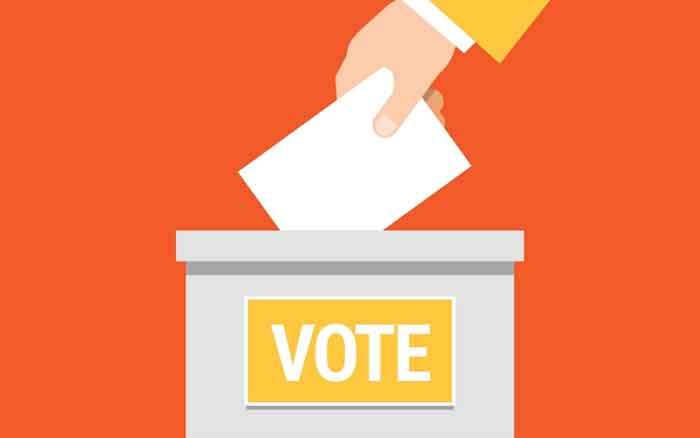
History Speaks to Clarify the Facts of Life
To be an informed and progressive generation of people for sustainable change and human development, we must discover unambiguous and self-evident knowledge-based understanding of history to reform the socio-ethnic and political contradictions covered up by adroit. In books and historic records, we encounter some of the unimaginable, intangible and mysterious narratives on the European scheme of colonization in Canada, America and Australia. Ronald Wright, Stolen Continents: Conquest and Resistance in the Americas (1992),(1) is one of the award winning Canadian scholarly sources covering the five centuries of Europeans coming to the ‘New World’, and brings together contemporary powerful, vivid, and accurate historic insights to the conquests of five great American cultures of Aztec, Maya, Inca, Cherokee and Iroquois people. Professor Howard Zinn, (A People’s History of the United States of America. 1980), clarifies that to “Columbus gold motivated him…: Columbus killed Indians…. enslaved Indians, Columbus tortured Indians, he cut off their arm… No, he’s not a hero. The heroes are the people who resisted him.” (2) Roxanne Dunbar-Ortiz (An Indigenous People’s History of the United States. 2014), adroitly challenges the founding myth of the United States and “shows how policy against the Indigenous peoples was colonialist and designed to seize the territories of the original inhabitants, displacing or eliminating them.” And notes: “we fail to recognize the humanity- or often even the existence – of the Indigenous peoples who were here first, and are still here. Our students will see the history of this country much more clearly when we put Indigenous people’s lives at the center.”(3) Across Canada, the US and Australia, the European settlers had a unique approach – how to colonize the indigenous peoples, their lands and culture of thinking, living and survival in extremely harsh conditions. Consequently, the systematic colonization approach taken by the colonialists was dependent upon the welfare state as a project of colonization. (4)
The 15th century European emigrants had experienced wars and overwhelming corrupt authority of church and wide range of chronic social turmoil, epidemic diseases, economic backwardness, spiritual malaise, and mysterious famine and deaths were omnipresent. The ‘discovery’ of America’ offered a new threshold of opportunities to the European migrants. But the invading settlers used absolute power to wage wars to solve their own problems at the expense of the new land and the native North Americans who flourished a culture of their own for centuries. Time and history would demand concerted plans and continuous movement for socio-economic-political change not finished answers to restore trust in human rights and equality, social emancipation for equal participation in the governance and realization of historic injustices done to dehumanize the indigenous people, their lives, cultures and values. Centuries later, politically geared Canadian “The Truth and Reconciliation Commission (TRC)” (2007-2015) holds public meetings to address the legacy of alleged ‘genocide’ of innocent children of the church operated ‘Indian Residential Schools system’ and discoveries of hidden graves with an opportunity to share their stories and experiences in public and to spell out much needed compassionate understanding and contrast of unconscious genius which created more perverse system to thrive on power, conflicts and fear. As part of the Indian Residential Schools Settlement Agreement, Canadian Prime Minister Justin Trudeau accepted the Final Report and imperatives of 94 ‘calls for action.”
Whatever the White European history willed, the native Indian history happened. Canada was structured as a settler colonial dominion. Many European nations, and the new government of Canada, imposed its own laws, institutions, and culture on the Indigenous Peoples. Along this colonial policy, these other colonialists occupied the lands of the Indigenous Peoples. (5) Racist attitudes justified Canada’s policy of assimilation and eradication which sought in many ways to eliminate the Indigenous Peoples. Thousands of Indigenous people – young and old, males and females were lost to the alleged Canadian system of genocide. Despite that First Nations, Inuit, the Metis, and other Indigenous Peoples are still habitants, don’t discount the historic horrors of genocide or the resilience of the Indigenous Peoples. Historic and contemporary actions contributed to the endemic violence against Indigenous Peoples. ( 6 ) Ultimately, the unjust deaths of the Indigenous Peoples are linked to colonial violence, racism, and oppression.
A direct consequence of this colonial policy and racist attitude was that colonial violence as well as racism, sexism, and other forms of injustice became entrenched in everyday life against Indigenous Peoples. (7) Encompassing the injustice and its consequential impacts that generation of Indigenous Peoples have grown up and living normalized to these types of injustice, social apartheid and discrimination. Thus, settler colonialism was the cause of increased rates of poor health, higher rates of violence, and other social problems that the Indigenous population endured over time.
The Indigenous Peoples were subjected to policies which led to poverty by way of settler colonial policies. Racist and discriminatory policies terminated hundreds of years of economic wellbeing and self-sufficiency. Imposing poverty on the Indigenous Peoples created state dependency on the colonizing state.(8) This dependency was needed for the state in order to control and oversee every aspect of Indigenous Peoples, their lives, cultures and communities. (9)
Quality of Life and inherent Problems of Social Injustice
The quality of life in a country and the wellbeing of citizens are determined by the social welfare system.(10) Social determinants of health are variables and factors which go towards optimum physical and mental health and general wellbeing.(11) The Canadian Welfare System consists of various social policy programs and services. The most important of these in alleviating poverty and helping the working poor are income security programs and social services. Income security programs provide monetary or other material benefits in order to provide income and maintain minimum income levels. This happens by way of Employment Insurance, Social Assistance, and Old Age Security.(12) This factors in with our historical model of social security wherein people are responsible for their own wellbeing. If individuals could meet their own needs and not need government assistance, the result would be that the need for income security programs would be significantly reduced. Income security programs provide financial stability and protect from vulnerabilities.
Poverty is another social determinant of health and wellbeing. Poverty is the condition wherein people, families, and demographics lack the resources to obtain the type of food needed, to participate in activities, to have customary or normal living conditions and amenities which provide wellbeing.(13) Poverty can be absolute or relative. The difference between these is that those suffering from absolute poverty don’t have the resources in order to provide for their physical and mental health. Relative poverty is where people cannot participate in common activities or daily life because of depravation and lack of ability. Programs such as income security programs provide monetary or other material benefits in order to provide income and maintain minimum income levels.(14) This would help those suffering from absolute poverty to buy the food they need in order for their physical and mental health to recover. Having financial resources also allows those distraught by relative poverty to afford participation in common activities such as societal interaction, health, family, community, sports, and exercise. (15)
Social Services Lacking Sense of Human Equality
Social services, which may include personal or community services, help the working poor by providing non-monetary aid to those who are needy. These services include probation, addiction treatment, youth drop-in centers, child-care centers, child protection services, women’s shelters, and counselling. (16) Many of these services are important to the working poor. The Public Health Agency of Canada found that recent immigrants are 2 times higher in being the proportion that make up the working poor.(17) This demographic of individuals may in fact benefit from youth drop-in centers and free child-care. Social services would allow mothers and fathers greater freedom in being employed and making sure their children are safe and taken care of. First Nations people, on reserves and off reserves, have more than 2 times higher proportion of working poor than non-Indigenous people. (18) Homelessness and drug addictions are major social problems that Indigenous Peoples contend with for their survival. It will be incumbent upon the Government in Canada and NGO’s to workout humanitarian plans for extended social services such as counseling, spiritual healing, women’s shelters, and drug addiction treatments to ensure the human equality offering proper care for the wellbeing and progress of the Indigenous Peoples.
Mohammad Momin Khawaja is a Sociologist and a Journalist: Member of the Canadian Sociological Association (CSA) and Member of the International Center for Journalist – ICFJ Global Network, Washington, D.C.USA. A graduate of Laurentian University in Sociology, he writes on current issues of social justice, criminology, philosophy, ethics, history and problems of social welfare system and human development. He is author of numerous publications including, Women in the Ancient World (2023), by Lambert Academic Publishing; and his forthcoming book is entitled: Philosophy and Ethics.
References
- Ronald, Wright. Stolen Continents: Conquest and Resistance in the Americas, Mariner Book, 1992
- Zinn, Howard. A People’s History of the United States of America, 1980: Chapter 1: COLUMBUS, THE INDIANS, AND HUMAN PROGRES.
- Roxanne, Dunbar-Ortiz. An Indigenous People’s History of the United States. Beacon Press, 2014
- Dickason, 0. Newbigging, W., “Indigenous Peoples within Canada’, A Concise History. Fourth Edition, Oxford University Press, 2019, p.19S.
- Milloy, J., “The Early Indian Acts: Developmental Strategy and Constitutional Change’, As Long As the Sunshine and the Water Flows, University of British Columbia Press, 1983, pp.S6-64.
- Ibid.
- Ibid.
- Ibid.
- Ibid.
- Raphael, D., “Poverty and the Modern Welfare State, In Poverty in Canada: Implications for health and quality of life”. Toronto, Ontario, Canadian Scholars’ Press Inc., 2011.
- Ibid.
- Ibid.
- Ibid.
- Ibid.
- Ibid.
- Hick, S., “Introducing Social Welfare: Understanding Income Security.” Thompson Educational Publishing, Inc., 2014.
- Public Health Agency of Canada. “Key Health Inequalities in Canada: A National Portrait.” Ottawa, Public Health Agency of Canada, 2018, https://www.healthinfobase.canada.ca/health-inequalities
- Ibid.













































